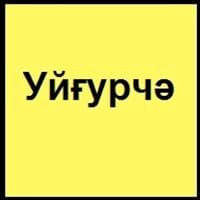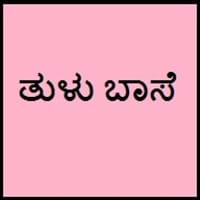National Language
China
India
Second Language
Not spoken in any of the countries
Not spoken in any of the countries
Speaking Continents
Asia
Asia
Minority Language
Kazakhstan, Uzbekistan
Not spoken in any of the countries
Regulated By
Working Committee of Ethnic Language and Writing of Xinjiang Uyghur Autonomous Region
Not Available
Interesting Facts
- Uyghur language has large quantity of loan words from Persian, Russian and Chinese.
- Uyghur was originally written with the Orkhon Alphabets.
- Tulu script is similar to Thigalaya script, which was one of the earliest scripts such as Persian and Latin.
- Tulu is a protoDravidian i.e original language.
Similar To
Uzbek Language
Kannada Language
Derived From
Gokturk Language
Not Available
Alphabets in
Uyghur-Alphabets.jpg#200
Tulu-Alphabets.jpg#200
Scripts
Arabic, Cyrillic, Latin
Kannada Script
Writing Direction
Left-To-Right, Vertical, Top-To-Bottom
Not Available
Hello
Ässalamu läykum.
Namaskara
Thank You
rakhmat
Mast Upakara.
How Are You?
Yakshimasiz? / Qandaq ahwalingiz?
Yencha Ullar?
Good Night
Kachlikingz khayrilik bolsun
yedde rathre
Good Evening
Kachlikingz khayrilik bolsun!
yedde baiyya
Good Afternoon
Not Available
yedde madhyana
Good Morning
Atiganlikingz khayrilik bolsun!
yedde kaande
Please
birdam
Daya maltadu
Sorry
kachurung
Yenna thapu aandu
I Love You
sizni yahshi kOrman
Yank ninade preeti Malpuye
Excuse Me
Kachurung
Kshamisi
Dialect 1
Turpan
Brahmin tulu
Where They Speak
China
Tamil Nadu
Where They Speak
China
Tamil Nadu
Dialect 3
Lop Nur
Girijan
Where They Speak
China
Tamil Nadu
Speaking Population
Not Available
Native Name
Уйғур /ئۇيغۇر (ujġgur / uyghur)
Tulu
Alternative Names
Uighuir, Uighur, Uiguir, Uigur, Uygur, Weiwu’er, Wiga
Tal, Tallu, Thalu, Thulu, Tilu, Tullu, Tuluva Bhasa
French Name
ouïgour
Not Available
German Name
Uigurisch
Not Available
Pronunciation
[ʊjʁʊrˈtʃɛ], [ʊjˈʁʊr tili]
Not Available
Language Family
Turkic Family
Dravidian Family
Subgroup
Not Available
Not Available
Branch
Not Available
Not Available
Early Forms
Karakhanid, Chagatai, Eastern Turki
No early forms
Standard Forms
Uyghur
Tulu
Language Position
Not Available
Signed Forms
Not Available
Not Available
Scope
Not Available
Individual
ISO 639 1
ug
No data available
ISO 639 2/T
uig
Not Available
ISO 639 2/B
uig
Not Available
ISO 639 6
Not Available
Not Available
Glottocode
uigh1240
tulu1258
Linguasphere
No data Available
No data available
Language Type
Not Available
Living
Language Linguistic Typology
Not Available
Not Available
Language Morphological Typology
Not Available
Not Available
All Uyghur and Tulu Dialects
Most languages have dialects where each dialect differ from other dialect with respect to grammar and vocabulary. Here you will get to know all Uyghur and Tulu dialects. Various dialects of Uyghur and Tulu language differ in their pronunciations and words. Dialects of Uyghur are spoken in different Uyghur Speaking Countries whereas Tulu Dialects are spoken in different Tulu speaking countries. Also the number of people speaking Uyghur vs Tulu Dialects varies from few thousands to many millions. Some of the Uyghur dialects include: Turpan, Hotan. Tulu dialects include: Brahmin tulu , Jain. Also learn about dialects in South American Languages and North American Languages.
Uyghur and Tulu Speaking population
Uyghur and Tulu speaking population is one of the factors based on which Uyghur and Tulu languages can be compared. The total count of Uyghur and Tulu Speaking population in percentage is also given. The percentage of people speaking Uyghur language is 0.12 % whereas the percentage of people speaking Tulu language is Not Available. When we compare the speaking population of any two languages we get to know which of two languages is more popular. Find more details about how many people speak Uyghur and Tulu on Uyghur vs Tulu where you will get native speakers, speaking population in percentage and native names.
Uyghur and Tulu Language Codes
Uyghur and Tulu language codes are used in those applications where using language names are tedious. Uyghur and Tulu Language Codes include all the international language codes, glottocodes and linguasphere.





